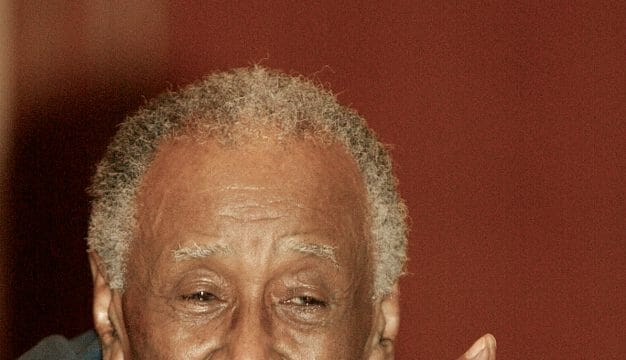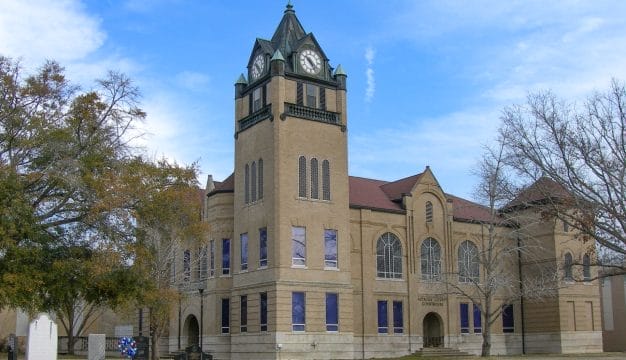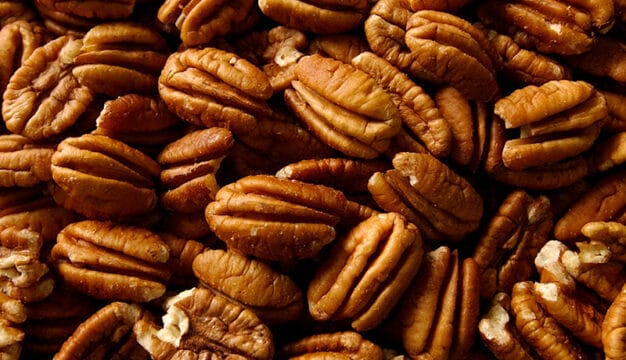Blanche Evans Dean
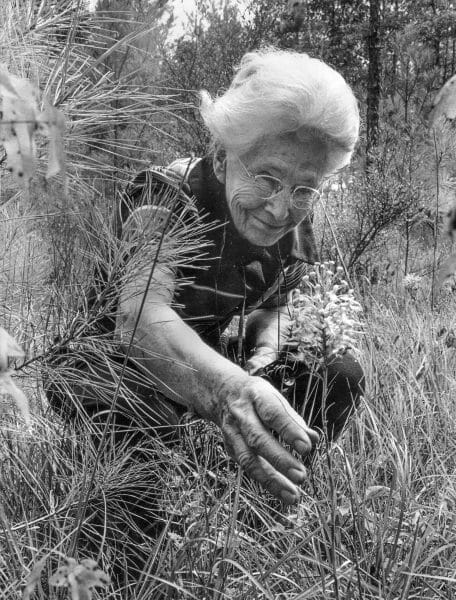 Blanche Evans Dean
Blanche Evans Dean (1892-1974) was a teacher, author, and conservationist. She was an early advocate of the value and protection of Alabama’s natural resources, and she spent most of her adult life persuading other Alabamians of that need. She published widely on the flora of Alabama, and many of her field guides remain the standard today. The youngest of 12 children, Viola Blanche Evans was born on June 12, 1892, to John James and Catherine Evans. She grew up on a farm in the Brownville community of Clay County, near Goodwater, on land her mother’s family had bought from the Creek Indians. Farm life and instruction from her father, whom she often accompanied, and her mother’s fondness for wildflowers instilled in her a love for and interest in the plants and animals that inhabited the world around her.
Blanche Evans Dean
Blanche Evans Dean (1892-1974) was a teacher, author, and conservationist. She was an early advocate of the value and protection of Alabama’s natural resources, and she spent most of her adult life persuading other Alabamians of that need. She published widely on the flora of Alabama, and many of her field guides remain the standard today. The youngest of 12 children, Viola Blanche Evans was born on June 12, 1892, to John James and Catherine Evans. She grew up on a farm in the Brownville community of Clay County, near Goodwater, on land her mother’s family had bought from the Creek Indians. Farm life and instruction from her father, whom she often accompanied, and her mother’s fondness for wildflowers instilled in her a love for and interest in the plants and animals that inhabited the world around her.
Evans graduated in 1908 from Lineville High School in nearby Lineville, where she boarded with a family, and returned to Brownville. She took a teaching job at the two-teacher school at Hatchett Creek Presbyterian Church and soon decided that teaching would be her chosen profession. Evans studied education at both Jacksonville State Normal School (now Jacksonville State University) in Alabama and Valparaiso University in Indiana, from which she earned a teaching certificate at age 26. She then taught for three years at Shades Valley High School in Birmingham. In 1922, Evans took a break from teaching and entered the University of Alabama, earning a degree in chemistry in 1924. She was then hired to teach biology at Woodlawn High School in Birmingham, where she developed her hands-on, experience-based style of teaching. Evans believed that students were better able to develop understanding of birds, plants, and insects and “a sense of being” for all living things by listening and observing first-hand, even getting down on hands and knees.
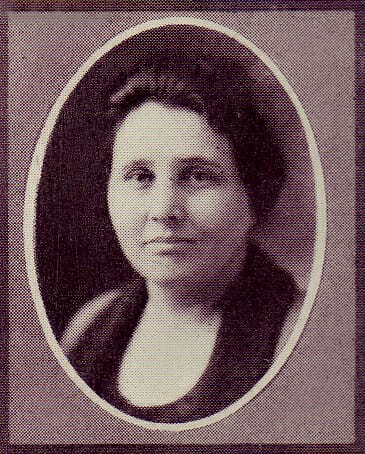 Blanche Evans, 1924
In 1939, Evans married William Dean of Goodwater, but the union lasted less than a year; Evans kept Dean as her last name, however. She then returned to teaching at Woodlawn and renewed her life in Birmingham by organizing field trips for colleagues and friends to explore the diverse birdlife and flora of Alabama. She trained those accompanying her in the essentials of being a field naturalist: making one’s own observations, using all sources of information, and creating a real sense of place for living things. This view of nature and nature study often brought Dean into conflict with those who did not share her views. During the 1940s, she and botanist Herbert McCullough of Howard College (now Samford University) petitioned the federal government to have Clear Creek Falls near Jasper declared a national park. The area, threatened by dam construction, was rich in mountain laurel, contained a rare species of white azalea, and even supported a stand of Canadian hemlock. Although Dean avoided open conflict, she spent hours pleading her case. Business interests won out, however, and the falls are now under Lewis Smith Lake.
Blanche Evans, 1924
In 1939, Evans married William Dean of Goodwater, but the union lasted less than a year; Evans kept Dean as her last name, however. She then returned to teaching at Woodlawn and renewed her life in Birmingham by organizing field trips for colleagues and friends to explore the diverse birdlife and flora of Alabama. She trained those accompanying her in the essentials of being a field naturalist: making one’s own observations, using all sources of information, and creating a real sense of place for living things. This view of nature and nature study often brought Dean into conflict with those who did not share her views. During the 1940s, she and botanist Herbert McCullough of Howard College (now Samford University) petitioned the federal government to have Clear Creek Falls near Jasper declared a national park. The area, threatened by dam construction, was rich in mountain laurel, contained a rare species of white azalea, and even supported a stand of Canadian hemlock. Although Dean avoided open conflict, she spent hours pleading her case. Business interests won out, however, and the falls are now under Lewis Smith Lake.
Environmental losses such as these drove Dean to begin a grass-roots organizing effort. In the 1950s, she helped establish the Alabama Ornithological Society and founded the Birmingham Audubon Society’s Wildlife Film Series, which brought nature programs to communities long before they were available on television. She became active in the Alabama Academy of Science and the National Association of Biology Teachers. She also organized and chaired the Alabama Conservation Council, a group dedicated to saving critical habitats endangered by strip mining and uncontrolled construction during the postwar years. Comprising some 50 members representing industrial, civic, religious, and educational institutions, the council campaigned against pollution and urged city planners to consider surroundings when shaping new development. The group gradually disbanded after several years, discouraged by repeated failures.
In 1951, in a further effort to give adults and other teachers a “hands on” understanding of Alabama’s rich natural heritage, Dean began her unique annual Outdoor Nature Camp. She persuaded college professors and other experts to volunteer their time as teachers and leaders. She directed these camps for 13 years at sites ranging from DeSoto State Park in Fort Payne to the Bon Secour National Wildlife Refuge, near Gulf Shores in Baldwin County.
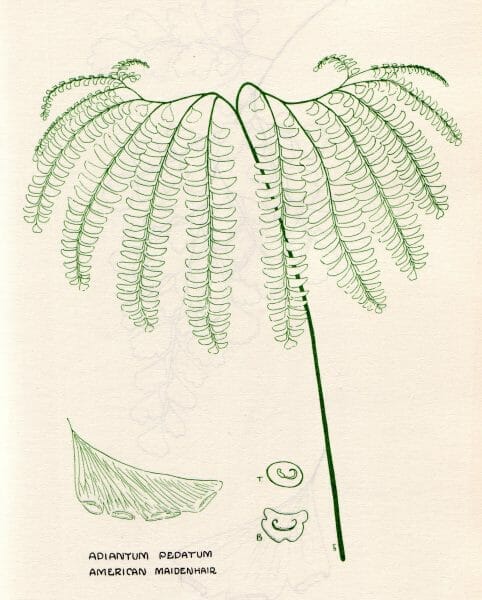 Maidenhair Fern
Frustrated during her teaching years by the lack of reference books on Alabama flora and fauna, Dean wrote and privately published Let’s Learn the Birds of Alabama (later reprinted in a revised and expanded version as Birds) after retiring from Woodlawn High School in 1957. Four years later, she published Trees and Shrubs in the Heart of Dixie (later revised as Trees and Shrubs of the Southeast). For it, she collected 500 specimens, with at least one from every county in the state. Although Dean was a self-taught botanist, her book is still considered an essential reference for field botanists in Alabama. In 1964, she published Let’s Learn the Ferns of Alabama (later reprinted as Ferns of Alabama), for which she again collected from every county. Enthusiastic friends helped Dean with her publishing costs.
Maidenhair Fern
Frustrated during her teaching years by the lack of reference books on Alabama flora and fauna, Dean wrote and privately published Let’s Learn the Birds of Alabama (later reprinted in a revised and expanded version as Birds) after retiring from Woodlawn High School in 1957. Four years later, she published Trees and Shrubs in the Heart of Dixie (later revised as Trees and Shrubs of the Southeast). For it, she collected 500 specimens, with at least one from every county in the state. Although Dean was a self-taught botanist, her book is still considered an essential reference for field botanists in Alabama. In 1964, she published Let’s Learn the Ferns of Alabama (later reprinted as Ferns of Alabama), for which she again collected from every county. Enthusiastic friends helped Dean with her publishing costs.
In 1967, Dean urged friend and fellow conservationist Mary Ivy Burks to undertake the task of forming the Alabama Conservancy (now the Alabama Environmental Council). She helped in the Conservancy’s efforts to have the Sipsey area in the Bankhead National Forest declared Alabama’s first statutory wilderness. The efforts were successful, and the site is now designated as the Sipsey Wilderness Area. That same year, the National Audubon Society presented Dean with an award for distinguished service in the field of conservation education. She was the first Alabamian to be so honored.
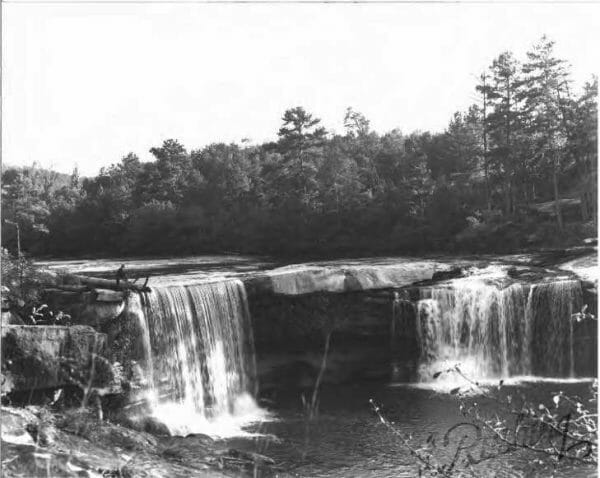 Clear Creek Falls
Two years later, at age 77, Blanche moved to Goodwater, where she continued to work on what would be her last writing project, Wildflowers of Alabama and Adjoining States. The book was coauthored by University of Alabama biology professor Joab Thomas, and friend and photographer Amy Mason provided images. It was published by the University of Alabama Press in 1973 and was a popular success. Early in 1974, the 81-year-old Dean suffered a debilitating stroke. She died on May 31 from related complications and was buried in the cemetery at Hatchett Creek Presbyterian Church. The following year, the Alabama Library Association made its first posthumous award, giving Blanche Dean the non-fiction prize for her books on Alabama natural history.
Clear Creek Falls
Two years later, at age 77, Blanche moved to Goodwater, where she continued to work on what would be her last writing project, Wildflowers of Alabama and Adjoining States. The book was coauthored by University of Alabama biology professor Joab Thomas, and friend and photographer Amy Mason provided images. It was published by the University of Alabama Press in 1973 and was a popular success. Early in 1974, the 81-year-old Dean suffered a debilitating stroke. She died on May 31 from related complications and was buried in the cemetery at Hatchett Creek Presbyterian Church. The following year, the Alabama Library Association made its first posthumous award, giving Blanche Dean the non-fiction prize for her books on Alabama natural history.
The legacy of Blanche Dean is evident throughout the state. The field guides she wrote are into their second and third printings, and her concept of outdoor education camps continues in the form of the Mountain Ecology Workshops at Mentone, sponsored by the Birmingham Audubon Society and dedicated to her memory. The Alabama Wildflower Society named its Birmingham chapter for her and created the Blanche E. Dean Scholarship Fund. In 1985, Dean was inducted into the Alabama Women’s Hall of Fame at Judson College. Dean’s true significance, however, lies those who have learned to share her love of Alabama’s natural wonders and gained the determination to protect them.
Further Reading
- Christenson, Alice S., and Larry J. Davenport. “Blanche Dean, Naturalist.” Alabama Heritage (Summer 1997): 16–23.
- Holliman, Dan, ed. A Fifty-Year History of the Alabama Ornithological Society: Remembrances and Recollections. Birmingham: Alabama Ornithological Society, 2002.
